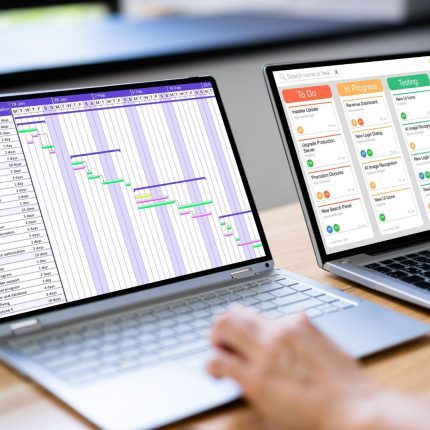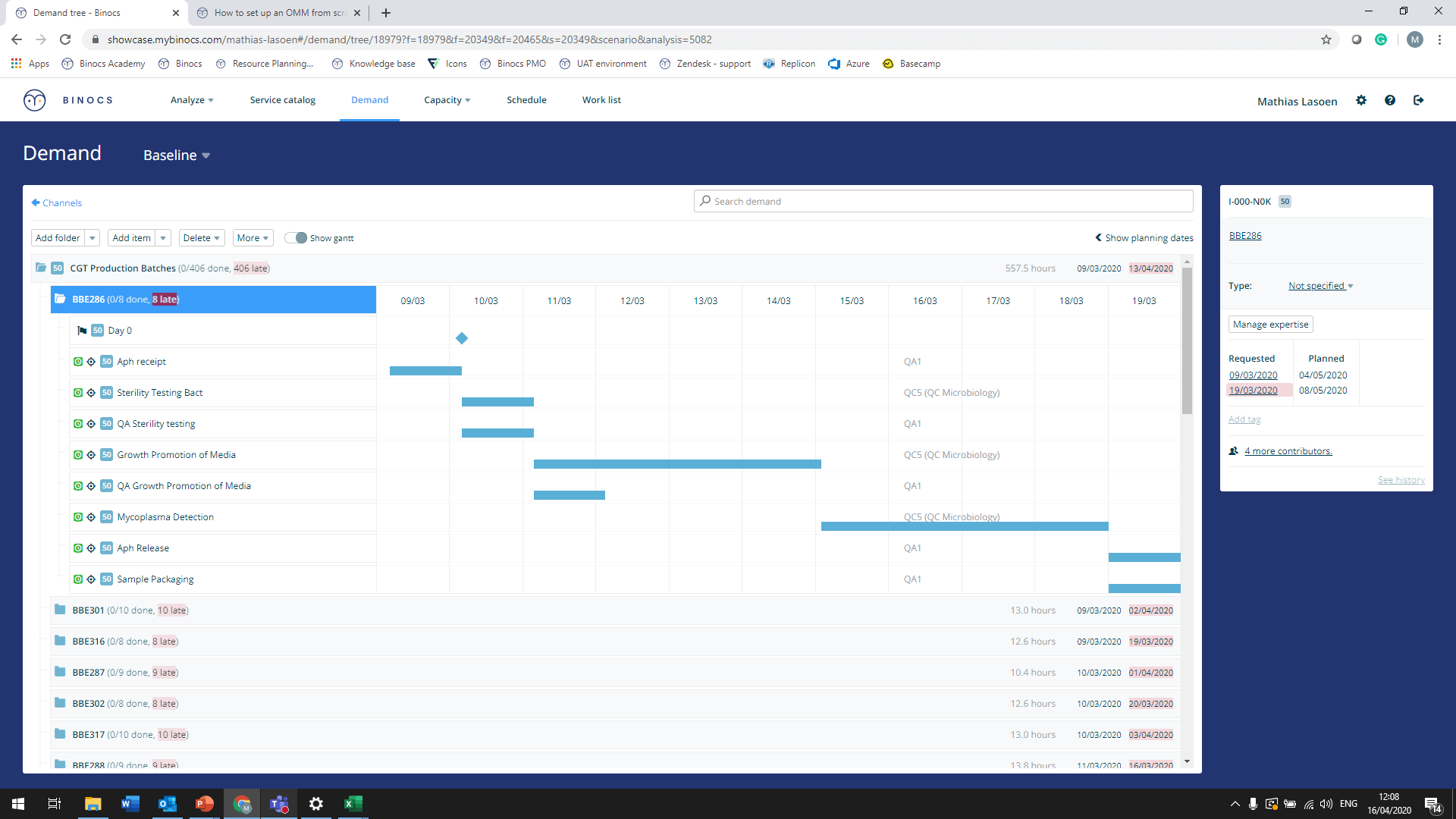
The link between organizing BBQs and the need for demand visibility
Effectively managing many projects at once is challenging, to say the least. More projects mean more interdependencies, more people and team constraints, more due dates… In short, you need a tool to manage this. Binocs has a different approach than most other digital project management tools on the market: by applying a rule-based operating model, we automatically translate work packages into properly sequenced tasks, ready to be executed.
Let’s start with an example
The weather is nice! Let’s organize a BBQ. What do we need to do?
- Finalize our guest list & send out invitations
- Book the location
- Hire BBQ chefs and staff
- Order food & drinks
- Check the weather forecast
- Ask our guests for feedback afterwards
The above list is the collection of tasks that need to be done to fulfill the BBQ’s expectations (= your project).
But… it’s more complicated than that
But what if some of our guests as vegetarians? Or vegan? In that case, it’s probably best to order some extra vegetables. What if the weather forecast is bad? Then it’s probably a safe bet to prepare some tents for our guests. What if there will be children? Should we foresee a bouncy castle in that case? It’s clear that the tasks you will need to do to organize your BBQ depend on the situation: your guests, the weather forecast…
Organizations run a multitude of ‘BBQs’ simultaneously. A couple of examples:
- QC/QA: the translation of a production plan to inspection, QC, and QA activities, for example. Here, the molecule, the recipe, production stage, … are input for the operating model.
- Regulatory: the operating model can translate a list of submissions into a detailed sequence of high-level regulatory affairs tasks like strategy definition, clinical writing, CMC writing, paper publishing, eCTD publishing… A list of submissions, including parameters like a product, region, type of variation, etc. are used to propose a default project plan.
- Cell therapy operations: the operating model will synchronize the single patient batch list from your CRM or ERP towards a detailed sequence of activities ranging from reception to shipping while considering media, vector growth, …
What project management tool can handle this complexity?
Planning all those ‘BBQs’ effectively is extremely challenging. Most project management tools let you define the activities for the BBQs manually or give you static templates as a tool to reduce the manual work.
Adapting those projects manually can be tedious and risky: whenever you make a small change or you want to reorganize tasks in MS Project, you feel like you should be an expert to understand the consequence of your manual change. “Hmm, not sure what happened behind the scenes…”.

Teach Binocs how you work
Binocs has a different approach. You can teach Binocs:
- What tasks need to be done within a particular project, production batch, …
- How long each task takes
- The interdependencies & sequence of these tasks
You can do this by defining your operating model in Binocs, which acts like dynamic templates. See the operating model as a ‘translation engine’ that automatically translates work packages into a multitude of demand lines, properly sequenced across different functional teams. Once a project is confirmed, the operating model concept allows you to define local variations (if applicable).
In short, Binocs automates the creation of Gantt charts. That leaves you / the planner with more time to focus on what really matters: will we have enough resources available to execute the project? Where could there be a bottleneck? Should we delay the project? What is the impact if we do?
This, in turn, makes project management more efficient and error-free (by partly automating some of the non-value adding work), creates visibility on projects across your teams & ultimately increases the likelihood you’ll deliver.

Do you want to teach Binocs how you work? We’ re happy to help! Check free resource planning!
More on project management
-
While we’re famous for being the leading SaaS solution for digital scheduling and capacity management, did you know that many CROs, MSAT teams, maintenance teams and other organizations also…Read more
-
Critical Chain Analysis: how project management concepts influence resource planning
Project management concepts are ubiquitous in modern planning, including in resource capacity planning systems. In this article, Adam Lester-George explores critical path analysis and critical chain analysis, and their…Read more -
Do you need a PMO or an RMO?
PMO vs RMO: what’s the difference between Project / Resource Management Offices? Do you instead need a Project AND Resource Management Office?Read more
Mathias Lasoen
Mathias is the Head of Growth Marketing for Binocs.






